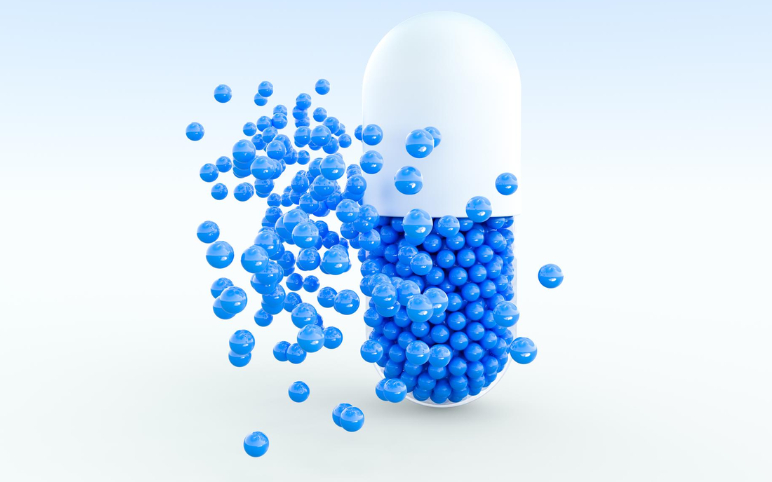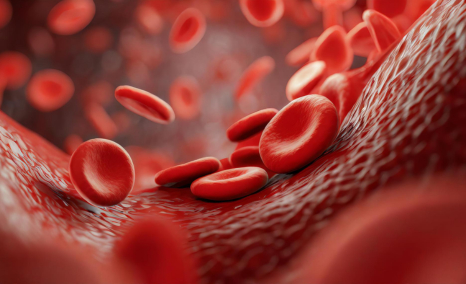Despite mixed results in clinical trials of the drug as an adjunctive treatment for depression, the FDA made its decision. It follows a new pair of pivotal trials (RGH-MD-75 and 3111-301-001) that found a clinically and statistically significant change from baseline on Montgomery-sberg Depression Rating Scale (MADRS) scores compared to placebo when a once-daily dose of Vraylar was added to background therapy – within a few weeks.
There is still a pressing need for antidepressant therapies that can begin to work faster than current tricyclic or selective serotonin reuptake inhibitor drugs, which can take weeks to work, putting severely affected patients at risk of self-harm before they kick in. In another late-stage trial, Vraylar was unable to improve depressive symptoms from baseline to week six in the MADRS total score when compared to placebo (3111-302-001). Meanwhile, in the 3111-301-001 study, Vraylar exerted its benefit at a lower dose (1.5 mg/day) but not at a Higher dose (3.0 mg/kg), undermining the top-line finding.
FDA Approves Ferring Pharmaceuticals’ Adstiladrin as First Gene Therapy for NMIBC
The US Food and Drug Administration (FDA) has approved Swiss drugmaker Ferring Pharmaceuticals’ Adstiladrin (nadofaragene firedenovec-vncg) for the treatment of adult patients with high-risk Bacillus Calmette-Guérin (BCG)-unresponsive non-muscle-invasive bladder cancer (NMIBC) with carcinoma in situ (CIS), with or without papillary tumors.
Bladder cancer is a relatively common type of cancer. According to the Centers for Disease Control and Prevention, approximately 57,000 men and 8,000 women are diagnosed with bladder cancer each year, and approximately 12,000 men and 4,700 women die from the disease.
Adstiladrin, developed by Ferring Pharma, is a non-replicating (cannot multiply in human cells) adenoviral vector-based gene therapy. Its safety and efficacy were assessed in a multi-center clinical study of 157 patients with high-risk BCG-unresponsive NMIBC, 98 of whom had BCG-unresponsive CIS with or without papillary tumors. Adstiladrin was administered into the bladder via a urinary catheter once every three months for up to 12 months or until unacceptable toxicity to therapy or recurrent high-grade NMIBC. Individuals who are immunosuppressed or immune-deficient should not come into contact with Adstiladrin.
Priority Review, Breakthrough Therapy, and Fast Track designations were given to the application. The FDA approval makes Adstiladrin the first gene therapy to be approved for adult patients with high-risk BCG-unresponsive NMIBC with CIS. Ferring intends to make the drug economically accessible to patients, and it is scheduled to become commercially available in the United States in the second half of 2023.
CSL’s Gene Therapy for Hemophilia B Recommends for approval by the EMA’s Human Medicine Committee
The first FDA-approved gene therapy for the treatment of the genetic bleeding disorder hemophilia B, CSL’s Hemgenix (etranacogene dezaparvovec), received a conditional marketing authorization recommendation on Friday from the European Medicines Agency.
Hemogenix is working to lessen the need for the lifetime intravenous infusions of factor IX replacement medications that hemophilia B patients now need to maintain adequate factor IX levels. The EMA’s recommendation is based on the findings of two open-label, single-dose, single-arm studies in which 55/57 adult male patients with moderately severe or severe hemophilia B sustained positive treatment effects for at least two years, despite the fact that the long-term durability of the therapy is unknown.
Following the FDA’s approval of the $3.5 million in cost gene treatment last month, CSL Behring gained notoriety. When it is approved, the price in Europe won’t be disclosed by the corporation.
Analysts at Wall Street firm SVB Leerink said Friday they estimate an EU price of $2.5 million, adding, we expect to learn more about the patient uptake trajectory as Hemgenix launches in the US and EU in 2023, but we see a compelling commercial opportunity ahead, even with limited uptake. Our model currently assumes that Hemgenix will achieve peak penetration of 5% in the moderate HemB population and 15% in the severe HemB population in both the US and EU, and we currently model peak (2030E) non-risk-adj. global sales of $2.4bn for Hemgenix.
The biotech company presented six months’ worth of durability data at ASH last week, demonstrating the continued efficacy of their medication.
All but three of the 54 hemophilia B patients treated with gene therapy, according to the company, were able to stop using prophylactic medication and avoided needing it for 18 months. The corporation claimed that the efficacy hadn’t changed even after six more months of data.
Merck and Moderna’s mRNA Cancer Vaccine Aces its First Efficacy Trial
According to Merck & Co. and Moderna, the mRNA technology that was used so successfully in vaccines against COVID-19 has now been discovered to hold similar promise against cancer. The two partners have released the first clinical data from a phase 2b trial of a personalized vaccine made up of 34 mRNAs, each of which targets mutations considered to be responsible for a patient’s cancer and were discovered by gene sequencing.
In the experiment, individuals with skin cancer melanoma were given either Keytruda (pembrolizumab) alone or Moderna’s MRNA-4157/V940 vaccination in addition to Merck & Co.’s cancer treatment Keytruda (pembrolizumab). Comparing the combination to the standard of care for individuals with this kind of cancer, Keytruda alone, the risk of death or disease progression was decreased by 44%. Because of its high concentration of white blood cells and reputation as a “hot” tumor that responds to immunotherapies, melanoma was selected for the experiment. While Keytruda disables an immune “brake” shielding cancer, the vaccine primes the immune system to attack tumor cells.
“These data provide the first evidence that we can improve on the rates of recurrence-free survival achieved by PD-1 blockade in resected high-risk melanoma,” said Jeffrey Weber, principal investigator in the trial. The results, he continued, also offer the first randomized proof that a tailored, “neoantigen” vaccine approach may be helpful in the treatment of cancer. The main challenge the partners must overcome is scaling up the individual manufacturing technique to make it an attractive, practical choice for health systems.
Currently, it takes more than eight weeks, from a biopsy to the collection of cells for sequencing to the administration of the customized shot, while efforts are being made to cut that time in half to around a month. At the population level, however, access to sequencing might be a significant barrier.
Takeda Announces the Phase 3 AURORA Study Result of Maribavir
On December 19, 2022, Takeda announced that in the AURORA trial, a Phase 3, multicenter, randomized, double-blind, double-dummy, active-controlled study to assess the efficacy and safety of maribavir compared to valganciclovir for the treatment of CMV infection in hematopoietic stem cell transplant (HSCT) recipients. Takeda has further updated that maribavir demonstrated clinically meaningful efficacy in confirmed CMV viremia clearance, but did not meet its primary endpoint of non-inferiority vs. valganciclovir.
CMV is a beta herpesvirus that commonly infects humans; serologic evidence of prior infection can be found in 40-100% of various adult populations. Takeda’s LIVTENCITY, an orally bioavailable anti-CMV compound, is the first and only antiviral agent that targets and inhibits the UL97 protein kinase and its natural substrates. The therapy is approved by the US FDA for the treatment of adults and pediatric patients with post-transplant CMV infection/disease that is refractory to treatment (with or without genotypic resistance) with ganciclovir, valganciclovir, cidofovir, or foscarnet. Moreover, the Takeda is set to share the AURORA study results with relevant regulatory agencies and will continue to engage with them on a potential path forward for maribavir in asymptomatic first-episode post-transplant CMV infection. Furthermore, the AURORA study results will also be submitted for publication in a peer-reviewed journal.
CHMP Backs Amicus’ Therapy for Pompe Disease
On on December 16, 2022, according to Amicus Therapeutics (LOPD) has announced that the European Medicines Agency (EMA) Committee for Medicinal Products for Human Use (CHMP) adopted a favorable opinion and recommended marketing authorization of cipaglucosidase alfa, a long-term enzyme replacement therapy (ERT) used in combination with miglustat for adults with late-onset Pompe disease. Additionally, the CHMP opinion on miglustat, the enzyme stabiliser component of AT-GAA, is anticipated in the second quarter of 2023.
AT-GAA is designed as a two-component therapy consisting of cipaglucosidase alfa, a long-term enzyme replacement therapy, administered in combination with miglustat, an oral enzyme stabiliser, for the treatment of adults with late-onset Pompe disease. The CHMP’s decision was based on the encouraging clinical data from the Phase 3 pivotal research (PROPEL), which is a randomized, controlled trial in LOPD to include patients in the high unmet need ERT-experienced population, in addition to ERT-naïve patients. As anticipated and consistent with a recent opinion of another ERT in this disease space, the CHMP also determined cipaglucosidase alfa does not qualify as a New Active Substance (NAS).
John F. Crowley, Executive Chairman and Founder of Amicus Therapeutics, Inc. has said, “Today’s positive CHMP opinion for Pombiliti™ (cipaglucosidase alfa) is a significant milestone and major step towards bringing this much needed new treatment for all adults living in the EU with late-onset Pompe disease. It is the realization of the work of so many individuals and teams dedicated to the mission of improving the lives of people living with Pompe disease”.
The European Commission (EC) is expected to take the decision on cipaglucosidase alfa, the enzyme replacement therapy component of AT-GAA, in the first quarter of 2023. Late-onset Pompe disease is a rare, debilitating, and life-threatening lysosomal disorder caused by a deficiency of the enzyme acid alpha-glucosidase (GAA). Reduced or absent levels of GAA lead to the accumulation of the substrate glycogen in the lysosomes of muscles and other tissues. Cipaglucosidase alfa is a recombinant human acid alpha-glucosidase enzyme (rhGAA) enriched with bis-mannose-6-phosphate designed to facilitate high-affinity uptake with retained capacity for processing into the most active form of the enzyme to break down glycogen.



